Thanks to comparative anatomy we nowadays know a fair amount about phylogenetic relationships in the animal kingdom. Some of it is confusing. Who would think on seeing a Rock Hyrax, an animal that looks like a plump marmot, that they were looking at a very close relative of the elephants? There is a similar huge difference between the anthias and their closest relatives as well.
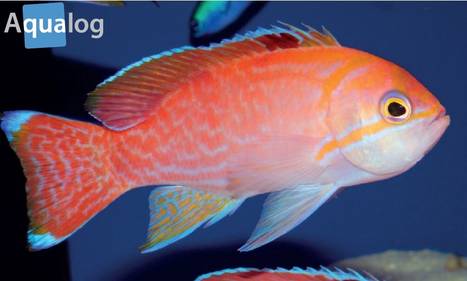
The anthias or fancy basses (Anthiinae) are a group of relatively small fishes that are usually breathtaking in their coloration. At present some 22 genera with a total of almost 250 species are recognized.All species live in the sea. But their closest relatives are in fact the groupers (Epinephelinae), whose largest representative can measure a good 3 m long and weigh more than 400 kg. Together with the groupers and the Serraninae the anthias make up the family Serranidae.

Shoaling fishes
Not only do anthias differ considerably in appearance from their larger cousins, but their behavior is also completely different. Specifically, the groupers are very intolerant of one another and solitary, and can be accustomed to one another in the aquarium only with a lot of effort and much patience, while anthias on the other hand are shoaling fishes that should always be kept in groups if possible. They will then display their entire behavioral spectrum as well as the full splendor of their coloration.
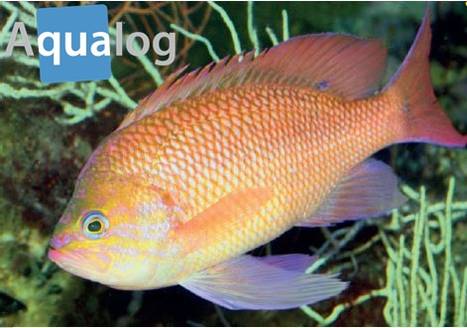
Protogynous hermaphrodites
But the anthias and the groupers do have one thing in common: they start life as females and end it as males. They are hermaphrodites, and species with this order of sex change are termed protogynous, while a hermaphrodite that starts life as a male and then changes into a female is termed protandrous. Hermaphrodites that are simultaneously male and female are termed functional hermaphrodites, but this occurs only fairly rarely. The rationale of protogynous hermaphroditism is obvious. One male can fertilize the eggs of numerous females. Because the likelihood of survival constantly decreases the older an individual becomes, in protogynous hermaphrodites it is sufficient if just one individual out of many makes it to being a male. The survival of the species is guaranteed nonetheless. Hence fish species that practice protandrous hermaphroditism are encountered only comparatively rarely.
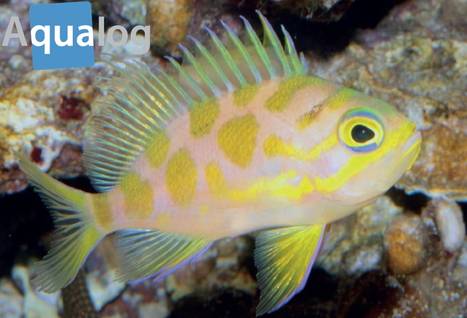
Life in a harem
The average shoal of anthias always consists of far fewer males than females. The males display vigorously among themselves, but this hardly ever leads to harmful battles and serves more to show the females what splendid fellows they are. As it is usually the females among these fishes that decide which male they want to mate with.If you have the opportunity then you should obtain one or several males (naturally this depends on the size of the aquarium) and three to five females per male. Unfortunately, however, males are exported more frequently than females as males are much more attractive in coloration and have larger fins.But even if the dealer has only males, you should still buy several specimens by preference, because social animals such as anthias will suffer psychologically if they are maintained without conspecifics. If you buy two males then there is a risk that one individual will dominate the other and in the medium term the subordinate specimen will die as a result of the permanent negative stress. A group of at least five specimens is always better (if aquarium size permits), as they will then develop a complex social structure that is most enjoyable to watch and very educational.Anthias don’t practice any brood care, but simply release their eggs and sperm into the water, where the fertilized eggs develop among the plankton.This strategy is apparently very successful, as anthias are among the commonest fishes on the reef.
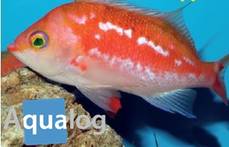
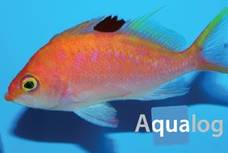
Plankton feeders
Unlike their larger cousins the groupers, which are predators, the anthias are specialized plankton feeders. Plankton is the term used for all organisms that live in the open sea. The largest planktonic animal is thus the Blue Whale, which is simultaneously the largest animal on Earth. But the term plankton isn’t used so precisely in common parlance and chiefly denotes small organisms. Thus anthias snap up everything that floats free in the water and fits into their mouths. The acclimatization of delicate species sometimes requires live food, especially if the fishes are very timid. They will then be so afraid of their owner that frozen or dry foodwill have long since disappeared before they have calmed down again. But once they have settled in, almost all anthias will accept “dead foods” such as the above-mentioned frozen or dry food without problem.Even so many aquarists regard anthias as difficult to keep. Why so? These fishes require food several times per day in order to remain healthy, as they aren’t able eat food to create reserves. But who can feed fishes 5-7 times daily? The answer is very simple – an automated feeder. Once your anthias will eat dry food, then you can use an automated feeder to provide these plankton-feeders with the type of feeding they require.Unfortunately a lot of mistakes are made with automated feeders and dry food. Dry foods, be they flake or granulate, are perishable foods that need to be stored in an airtight container in a cool, dark place. Otherwise the valuable unsaturated fatty acids become oxidized, vitamins are destroyed by light and heat, and bacteria and fungus attack the carbohydrates and proteins. Hence such foods are best kept in the refrigerator, and ideally the automated feeder should be refilled daily.
Once opened a pot of food should be used within four weeks at the latest. Anyone who buys large containers should freeze the bulk. If in addition you also feed them morning and evening with frozen food, then anthias are not only gorgeous, but also fairly problem-free, and will repeatedly enchant you with their splendid coloration and their interesting social behavior.
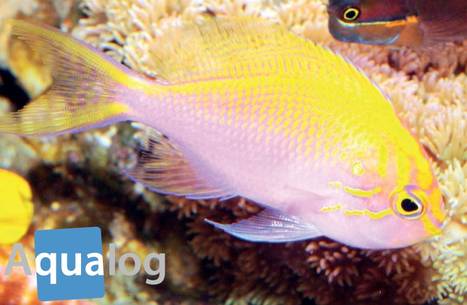
Anzeige






